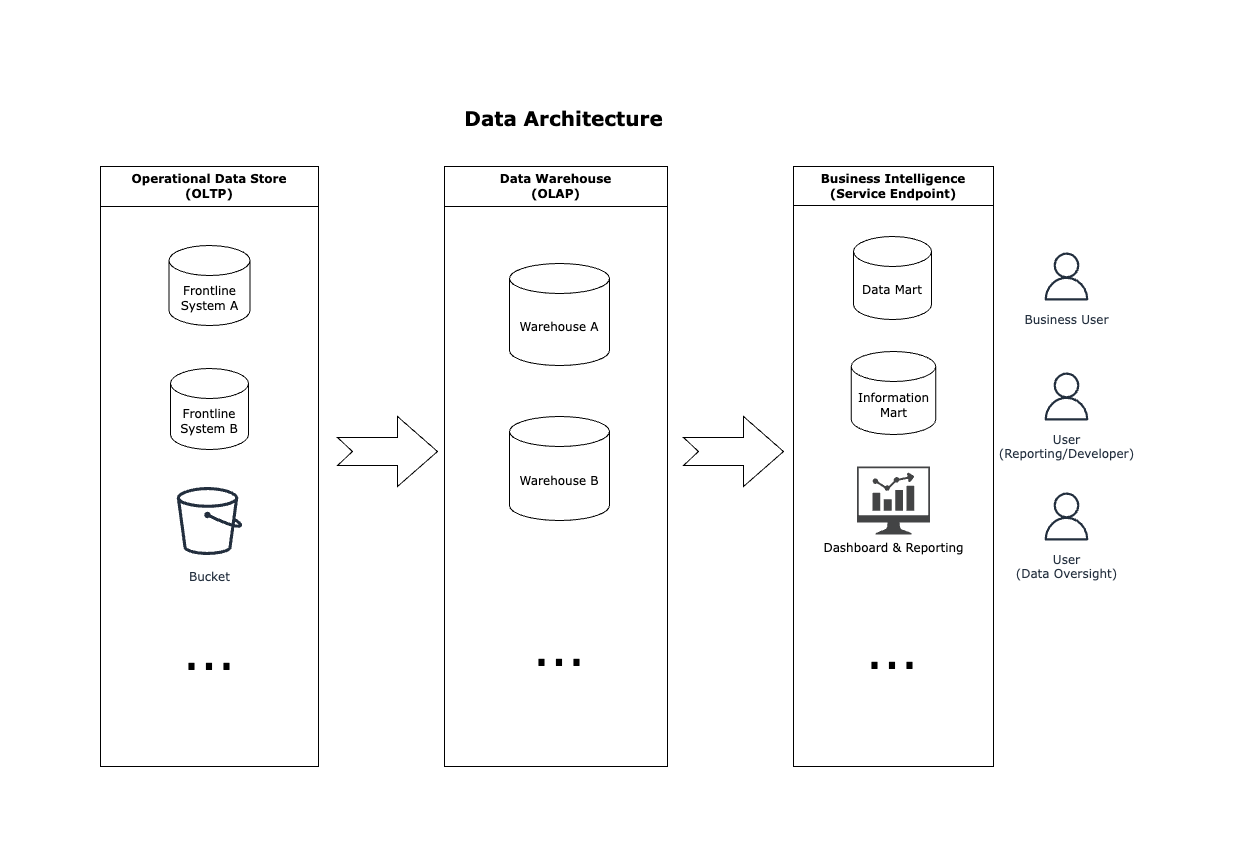orcahouse-doc
Data Architecture
The Data Architecture diagram provides a high-level overview of expected data flows.
The OrcaHouse project mainly involves at Data Warehouse and Business Intelligence data stages.
See Glossary for terms.

Data Layer
Warehouse data pipeline is organised into high level data layers. Similar to medallion architecture. The upstream data stages are incrementally and progressively improved into downstream data stages.

Techniques
- In order to achieve maximum “closer-to-the-live” data freshness from frontline applications, we use Foreign Data Wrapper (FDW). With this technique, we mount all our frontline system databases into the Staging Area Layer under ODS schema as Read Only.
- Sometime, we have data persisted elsewhere i.e. none RDBMS upstreams such as Spreadsheet. In this case, we temporarily stage the data into Staging Area Layer under TSA schema. Typically, we use AWS Glue to drive these data sources.
- The key essence of data warehouse is keeping track of business facts and change records history. The level of details - data grain - is important. We practise both conventional change data capture (CDC) pattern and Data Vault 2.0 methodology. This happens in PSA and DCL (DV2 patterns - Raw Vault/Business Vault) data schemas.
- The Information Delivery Layer involves implementing business specific use cases or data marts. This follows implementing Dimensional Modelling (Kimball) technique or just straight to the Single Table Design (flat & wide, denormalized) or, even Relational (Inmon) design. Depending on the complexity of the use cases and requirements, we can select an appropriate modelling strategy at this layer.